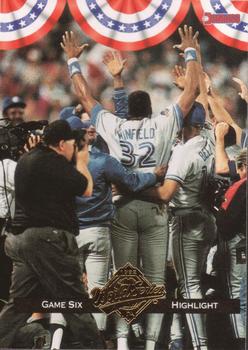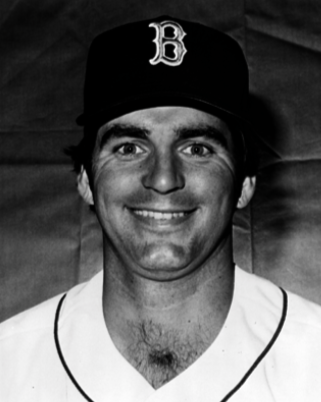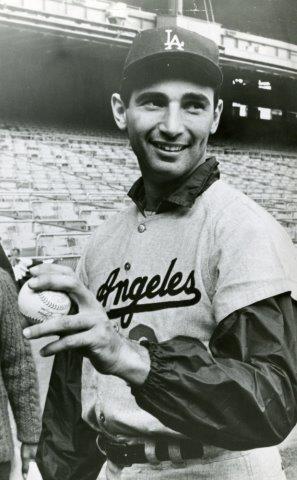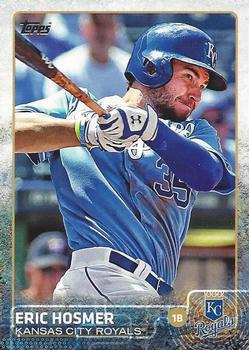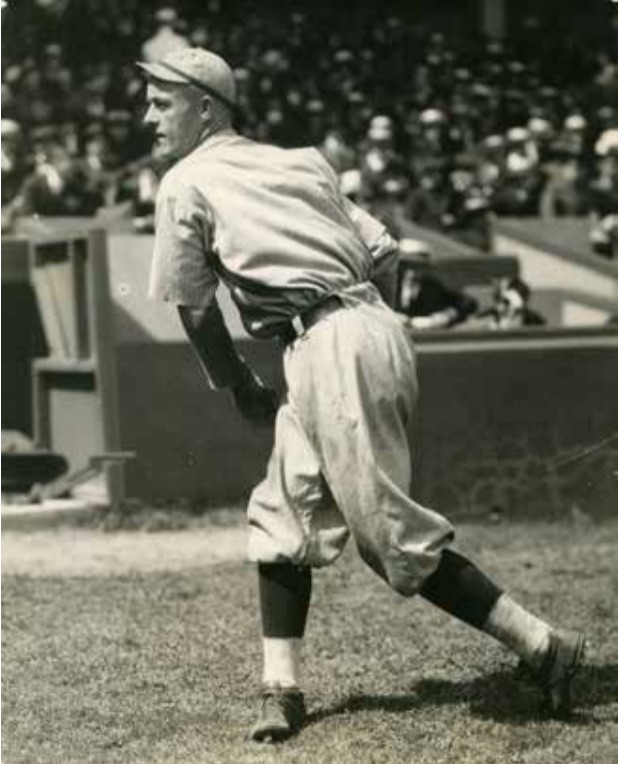October 4, 1935: Cubs stymied by ejections, errors, and the Schoolboy in Game 3
After splitting the first two contests of the 1935 World Series in Detroit, the Tigers and Cubs trekked westward to Wrigley Field for Game Three. With no travel day scheduled, the players struggled to catch up on their rest, with a few of them dozing off as their trains caromed around the southern shore of Lake Michigan and into Union Station at Canal and Jackson — from which the Tigers found their way to the Knickerbocker Hotel while the Cubs dispersed to their residences.
When the tired teams reached Wrigley late the next morning, they found the weather to have warmed slightly to a moderate 57 degrees. The Tigers, outlasted by Dizzy Dean and the St. Louis Cardinals in the fall classic a year earlier, were on a mission to redeem themselves. But they would have to forge ahead without the services of their fearsome slugger, 1935 American League MVP Hank Greenberg. Suffering a wrist injury in Game Two, Greenberg begged Mickey Cochrane to let him play despite the wrist remaining badly swollen — but the player-manager would not relent. Instead, Cochrane opted to move regular third baseman Marv Owen across to Greenberg’s position of first base while Flea Clifton took over at third.
In attendance at Game Three were Chicago Mayor Ed Kelly and US Postmaster General James Farley. The two dignitaries sat next to each other in the first row while receiving a pregame visit from Cubs catcher Gabby Hartnett. As they turned to acknowledge the crowd, Kelly and Farley were surprised to see empty seats in the upper reaches of the ballpark. “The actual attendance fell short of expectations,” noted one writer by the conclusion of the afternoon, “as ticket poachers once again struggled to release their wares. Evidence of this was provided by a fan, Michael Hammerman, who according to the Chicago Tribune had purchased two box seats for 25 cents just before the Cubs took the field.”1
In advance of the first pitch by Bill Lee, Cubs owner Phil Wrigley himself strutted out to center field and raised the National League championship banner to the top of the flagpole. Confident that his club would repeat as champion in the senior circuit again in 1936, Wrigley told the fans that “the team would clinch in plenty of time to process World Series tickets by mail only for the following year.”2
The home did not disappoint as play got underway. “The Cubs, apparently comforted by the sight of their own Wrigley Field, jumped off to a flying start,” wrote Irving Vaughan in the Tribune. “They fairly frolicked on their way with diving catches, leaping catches, machine-like plays and timely hitting.”3 Their offensive assault was sparked by Frank Demaree, who blasted a home run to lead off the Chicago second inning against Detroit pitcher Elden Auker, the side-armer who was rumored to have learned his submarine style by throwing in tornado shelters back home in Kansas. Stan Hack followed with a single to center, and after stealing second, he reached third on an error by Clifton before scoring on a Lee groundout. When Augie Galan singled home Bill Jurges in the fifth inning, the lead grew to 3-0.
The Cubs were flashing their leather as well — including a great play by Demaree on Cochrane in the Tigers fifth, “a short fly to right and apparently headed for open territory just inside the foul line,” as Vaughan described it. “Demaree, playing deep, charged in, skidded feet first along the ground as he neared the ball, turned over and came up with the ball in his hands.”4 Not to be outdone was the gritty leader Hartnett. “Twice he galloped over to the stands, once as far as the Tiger dugout, to snatch foul balls off the necks of spectators.”5 On one such occasion in nabbing a foul pop off the bat of Auker, Hartnett had inadvertently pinned home-plate umpire Dolly Stark against the wall along the box seats.
Looking to bury the Tigers to make sure his club took control of the Series, Cubs manager Charlie Grimm kept his foot on the gas in the sixth. Among his troops was a teenage rookie first baseman, Phil Cavarretta, fresh out of Lane Tech High School, which stood just a few blocks away from Wrigley Field on Addison Street.
But when Cavarretta bolted in an attempted steal of second, he was called out by umpire George Moriarty. Charging over to the scene from the third-base coaching box, Grimm was quickly ejected for arguing. “He kept on talking after being banished,” Vaughan noticed, “but the Cubs refused to forget the incident.”6 Earlier in the Tigers’ half of the sixth, another umpire, Ernest Quigley, had given the heave-ho to Tigers third-base coach Del Baker after Pete Fox was picked off third by Hartnett.
Although officially exiled from the game, Grimm continued to manage from the tunnel leading to the locker room, feeding instructions to coach Red Corriden while staying out of view.
Through the seventh, Lee held a firm grip on the game for Chicago, despite the Tigers creeping closer at 3-1. “But there was a crash in the eighth,” Vaughan continued, “and the battle started in earnest. Down in the crash went Lee. For seven innings he had been well nigh invincible.”7 A four-run outburst in that frame suddenly put Auker in the lead at 5-3, as Lon Warneke entered in relief for the Cubs. “It wasn’t the same Warneke,” Vaughan wrote in comparison to the four-hit shutout the pitcher had authored in Game One in Detroit. “The Tigers kept on hitting just as if Lee still were in there.”8
Corriden — or perhaps it was Grimm — gambled by pinch-hitting Chuck Klein for Jurges in the ninth; for if the Cubs did not win the game with three runs, there were no infielders remaining to play shortstop in the 10th, as Woody English (and outfielder Tuck Stainback) had also been ejected by Moriarty for hollering from the bench in the eighth.
But the roll of the dice paid off, as Klein followed a single by Hack with one of his own. Backup catcher Ken O’Dea (batting for Warneke) plated Hack with yet another, with Galan subsequently adding a fly ball to tie the game, 5-5, sending it into extra innings. The runs had come at the expense of Lynwood “Schoolboy” Rowe, the Tigers ace who had relieved Auker in the top of the eighth.
Adjusting the defensive pieces as best he could, Corriden moved Hack from third to short, Freddie Lindstrom from center to third, and Demaree from right to center, and kept Klein in the game in right.
The makeshift alignment did the job for one inning, but came apart in the 11th. Billy Rogell led off and dribbled a single up the middle and past Hack, a ball Jurges likely would have reached. A couple of batters later, Lindstrom bobbled a slow grounder. With two out, Jo-Jo White drove a single to center that scored Owen with an unearned run (Owen had forced Rogell with an unsuccessful bunt).
The Schoolboy, meanwhile, had settled down after permitting Chicago to send the contest into the extra frames. “Rowe avenged his defeat in the opening game by throttling the Cubs on one hit in the last two,” Vaughan wrote of the final chances for Grimm’s men … [the conclusion of] eleven wild, thrilling, spectacular, even boisterous, umpire baiting innings.”9
Hitting stars in the game included Rogell and Goose Goslin for the Tigers with three safeties apiece, while the Cubs — led by two each off the bats of Hack, Lindstrom, and Galan — carried their frustration into the locker room. “No matter where you may travel, into high society or low, you will never hear such picturesque cuss words as flew from the mouths of the raging Chicago Cub team today,” wrote Doc Holst of the Detroit Free Press, who held his ear to the door, “when they dashed into their clubhouse stinging with defeat.”10
Across the hall, Cochrane gloated to W.W. Edgar of the Detroit Free Press in between swigs of a bottle of soda. “They threw everything they had at us and it wasn’t enough,” he said of the Cubs. “I wonder how Grimm feels now after he has seen his pitching staff battered up. Who’s left to throw tomorrow? He used Lee, Warneke, and Larry] French, three of his best bets today, and wound up on the wrong end.”11
But then Cochrane wiped his brow and relented a bit. “It was the toughest World Series game I’ve ever played in,” he admitted.12
This article appears in “Wrigley Field: The Friendly Confines at Clark and Addison” (SABR, 2019), edited by Gregory H. Wolf. To read more stories from this book online, click here.
Sources
In addition to the sources listed in the Notes, the author also consulted Baseball-Reference.com, Retrosheet.org, and The Sporting News.
https://www.baseball-reference.com/boxes/CHN/CHN193510040.shtml
https://www.retrosheet.org/boxesetc/1935/B10040CHN1935.htm
Notes
1 Doug Feldmann, September Streak: The 1935 Chicago Cubs Chase the Pennant (Jefferson, North Carolina: McFarland, 2002), 192-193.
2 Ibid.
3 Irving Vaughan, “Cubs Lose, 6-5; Use Carleton Today,” Chicago Tribune, October 5, 1935: 1.
4 Vaughan: 22.
5 Ibid.
6 Ibid.
7 Vaughan: 1.
8 Ibid.
9 Ibid.
10 Doc Holst, “‘T’isn’t Right!’ Bemoan Cubs,” Detroit Free Press, October 5, 1935: 14.
11 W.W. Edgar, “Mickey Feels Cubs Are Lost,” Detroit Free Press, October 5, 1935: 15.
12 Feldmann, 196.
Additional Stats
Detroit Tigers 6
Chicago Cubs 5
11 innings
Game 3, WS
Wrigley Field
Chicago, IL
Box Score + PBP:
Corrections? Additions?
If you can help us improve this game story, contact us.


